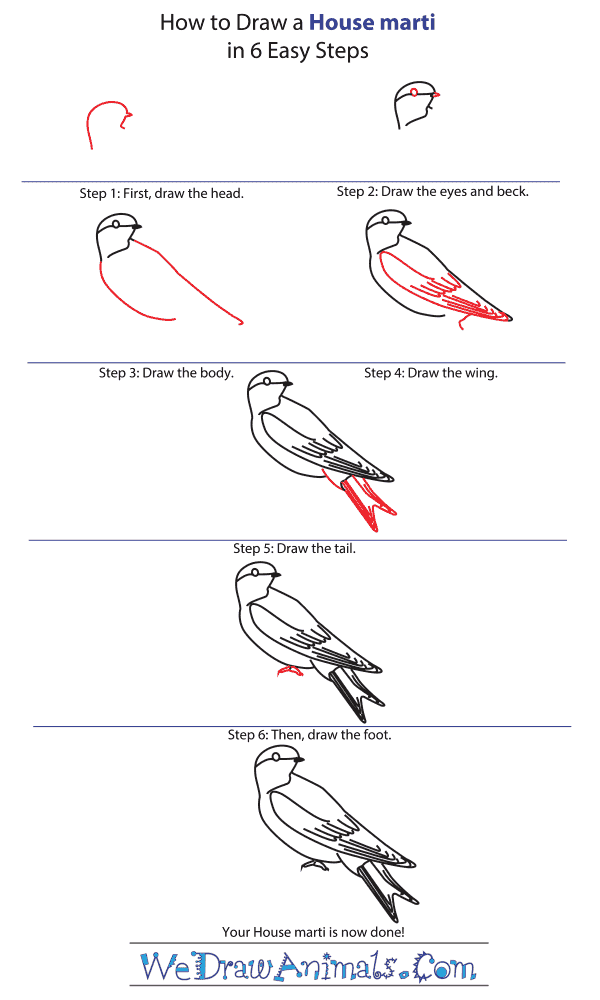In this quick tutorial you'll learn how to draw a House Martin in 6 easy steps - great for kids and novice artists.
The images above represent how your finished drawing is going to look and the steps involved.
Below are the individual steps - you can click on each one for a High Resolution printable PDF version.
At the bottom you can read some interesting facts about the House Martin.
Make sure you also check out any of the hundreds of drawing tutorials grouped by category.
How to Draw a House Martin - Step-by-Step Tutorial
Step 1: to draw the head, starts from the left and curve down to the right, an then add a tiny beak at the right
Step 2: Add a circle for the eye, and a line that goes across the face and just below the eye
Step 3: Draw a long and narrow body by drawing two lines, one crved and the other straight
Step 4: Draw the wing by using curved lines to make feathers. Mae sure the there are more lines at the bottom to indicate more feathers.
Step 5: Draw the tail, which is another series of slightly-curved lines to use for feathers.
Step 6: Draw the foot, a little line right underneath the body
Interesting Facts about the House Martin
House Martin is a migratory bird that performs breeding in Europe, North Africa and temperate areas in Asia and spend winter season in Sub-Saharan Africa and tropical areas of Asia. They prefer residing in open areas where there is less vegetation such as pastures, meadows and farmlands. Their upper body is blue in color while the under parts are purely white. They are 13cm long with have a wingspan of 26-29cm and weigh about 18.3g. Their eyes are brown in color and have a black bill. Their diet includes insects, flies, aphids, ants. Hobby is their primary predator.
Did you know?
- They hunt for their food during flight.
- Their speed during flight is about 11m/s.
- Male house martins sing the entire year. They also have specific alarm, conversing sounds such as ‘chirrrp’ and ‘tseeep’.
- They have a lifespan of 2 years only.
- Both adult males and females look familiar in appearance.
Lesson plan note: Draw an outline of house martins and let children fill it with colors while imitating sounds produced by house martins.







